We’re thrilled to be joining Intermusica for worldwide general management, where we will be managed by Maebh Lehane. More information on the Intermusica’s website here
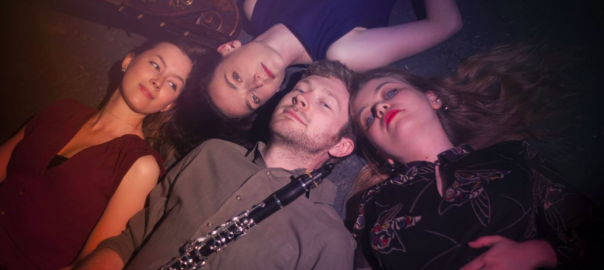

We’re thrilled to be joining Intermusica for worldwide general management, where we will be managed by Maebh Lehane. More information on the Intermusica’s website here
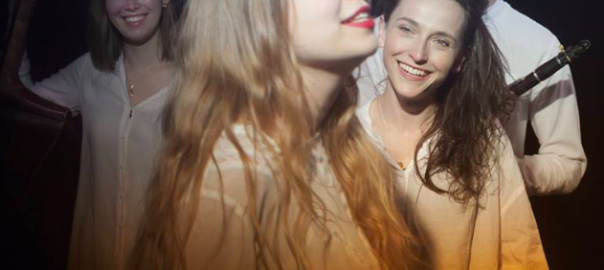
Our debut album HERE WE ARE is OUT NOW on Delphian Records – buy / stream / watch HERE.
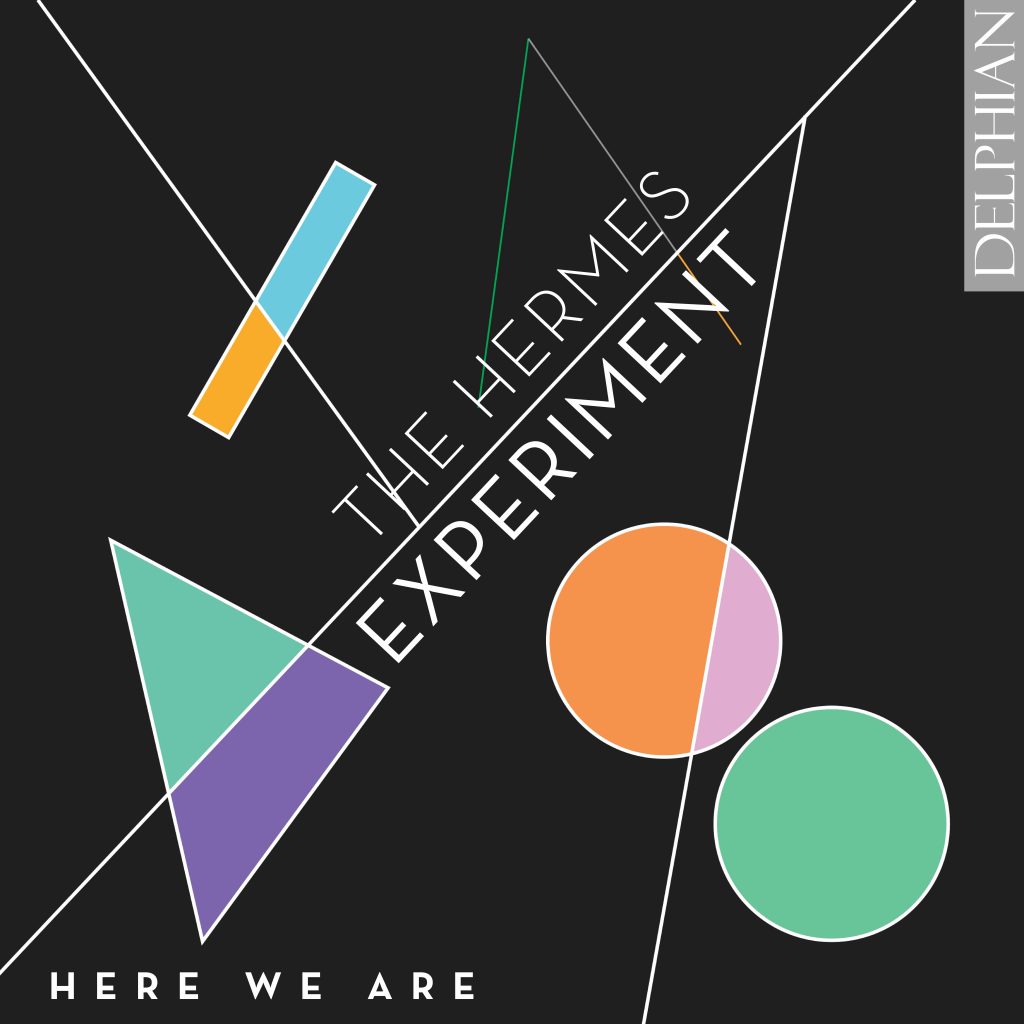
Gramophone Editor’s Choice
Presto Classical Editor’s Choice
Apple Music 10 Classical Albums of the Month
‘This British group have released a most enticing calling card, advertising the skills of individual musicians and the liveliness and variety of Britain’s composing scene’ – ★★★★ The Times
‘distinctive, witty, arresting songs (…) An imaginative first disc that mirrors our current musical landscape’ – The Observer (full review here)
‘Hermes are quite an act, boldly entertaining’ – ★★★★★ The Scotsman
‘witty and imaginative (…) joyous and heartbreaking’ – The Guardian (full review here)
‘as delightful an encounter as the ensemble is in real life (…) so many delights on their album, you never know what’s going to happen – it’s great hearing such a variety of composers finding interesting ways of using this ensemble’s unique resources (…) a uniquely engaging ensemble’ – Andrew McGregor, Record Review, BBC Radio 3
‘The Hermes Experiment’s main strength lies in its ability to adapt to the particular needs, demands and peculiarities of each piece contained on this deeply engaging collection: harp, clarinet, soprano and double bass locked in dynamic and synergistic fusion.’ – Gramophone Magazine
‘[HERE WE ARE] will surely be representing Delphian, alongside guitarist Sean Shibe’s Bach set, on many “best of” lists (…) There are many startling things about The Hermes Experiment, beginning with the group’s line-up of soprano voice, clarinet, harp and double bass, which blends so well its singularity ceases to be relevant’ – The Herald (full review here)
‘brilliant album’ – Hannah Peel, Night Tracks, BBC Radio 3
‘buzzing with invention and shimmering with colour’– Apple Music
Our Swayne video was also selected by Gramophone Magazine as video of the day:
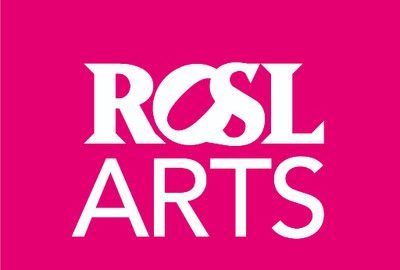
We’re thrilled to have won the ROSL Competition for Mixed Ensembles earlier this month. We were awarded £10,000 and will go on to perform at the Gold Medal Final on 30 May 2019 at the Queen Elizabeth Hall. Their full press release is available here.
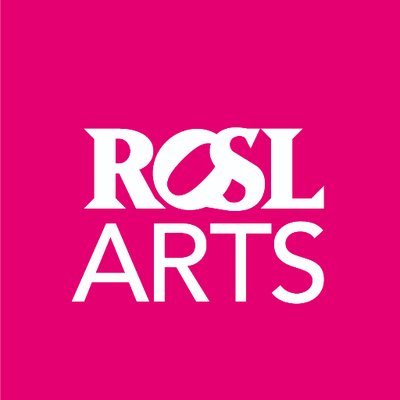
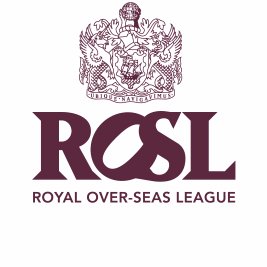
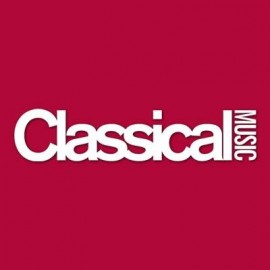
The Hermes Experiment is featured in this month’s Classical Music Magazine ahead of our birthday concert next week – you can read the feature online here.

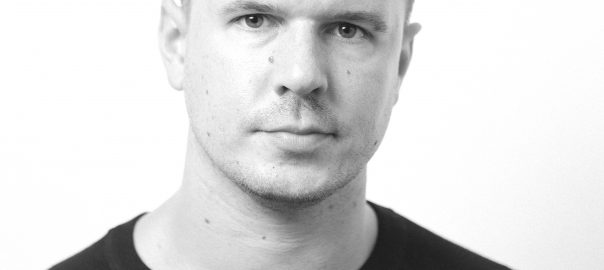
Sourcing texts for Saṃsāra – my new piece for The Hermes Experiment
“The tears we’ve shed while wandering this long, long time are greater than the water in the four great oceans.”
I find one of the biggest challenges about writing a new vocal piece is deciding what text(s) to set, if it’s not immediately clear from the outset. It’s made even trickier if the main idea for the piece comes first and then texts are needed to bring it to life. This was the case for my recent piece for The Hermes Experiment, called Saṃsāra, premiering at Cafe OTO later this month.
‘Saṃsāra’ is a Sanskrit word used in Buddhism, Hinduism, Sikhism and Jainism to describe how the human soul wanders through endless cycles of birth and rebirth, transmigration and reincarnation, before it eventually achieves enlightenment. According to these religions, we are all in a state of saṃsāra: we have been here many times before, and will be back many times again, on an never-ending journey of rebirth, life and death. The subject fascinates me both for its profound and spiritual dimension but also for its connection to the mundane: the seemingly endless cycles and patterns of behaviour we drift in and out of in our everyday lives, sometimes against our better judgement.
On my quest for suitable texts to set, I turned to religious scriptures that discuss the notion of saṃsāra. I discovered many beautiful passages in Hindu and Buddhist texts, in particular the translations of The Tibetan Book of the Dead. But the problem with many of these extracts is they felt perfect just as they were; beautifully written and translated to be spoken or read, not set to music. During the search, I also came across some particularly inspiring translations of Buddhist texts by Ṭhānissaro Bhikkhu, the abbot of Metta Forest Buddhist Monastery in California, and I asked him for guidance on navigating the Buddhist canon that deals with saṃsāra.
The only way to contact the monastery is by post or phone, which is answered during one hour a day. After exchanging a series of voice messages the abbot very kindly sent me a collection of suitable texts and translations for me to draw upon. By this point, I’d also realised that I really wanted this piece to bring something new to the exploration of saṃsāra, both in the music and in the words. So in parallel to my communications with the monastery, I’d also asked the poet Konstantinos Papacharalmpos if he would be interested in writing a new text especially for the piece.
Konstantinos and I had met a while ago and I remember being instantly struck by his playful and original approach to structure, shape and meaning. Together, we developed a loose structure for a poem that would trace one complete cycle of rebirth, life and ‘re-death’. Konstantinos then worked his magic, creating four contrasting worlds exploring a soul’s journey as it wanders through saṃsāra and using water as a metaphor to convey cyclicality and transience.
The final text for the piece uses three key sections of Konstantinos’s new poem (the poem is printed in full in the score), interspaced with a refrain taken from The Tipitaka – the collection of texts that form the foundations of Theravada Buddhism – that the abbot had drawn my attention to:
“Many times, have you experienced the death of a father… the death of a mother… the death of a brother… the death of a sister… the death of a son… the death of a daughter. The tears we’ve shed while wandering this long, long time are greater than the water in the four great oceans.”
Much of the piece is written without a definite pulse or time signature, giving it a free, wandering quality. Instead, arrows in the score indicate moments of synchronicity while other decisions about timing are left to the performers. The refrain, which is worded slightly differently each time, represents the inevitable cycles of saṃsāra. The music is underpinned with a sequence of chords that repeat over and over, but in different guises and transformations. Finally, a single crotale, a shaker and bass drum beaters for the harp strings create a ritualistic atmosphere as the music unfolds.

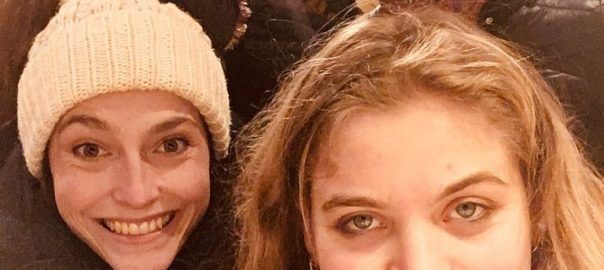
The Hermes Experiment wishes you all a very Happy Christmas and New Year!
We’ve been very busy in the past two months with performances at the Union Chapel as part of the London Jazz Festival, in St Petersburg, with composer Jethro Cooke (picture below) and at Spitalfields Festival, premiering a beautiful song cycle by composer Josephine Stephenson as well as a new piece that we had devised.
Heartfelt thanks to the wonderful people who made it all happen, in particular Ben Eshmade, Rachel Caccia, André de Ridder, everyone at Spitalfields Festival, our funders for the Russia project – RVW Trust, Sound Ways International New Music Festival and the Future of Russia Foundation, and of course all of you audience members for your continued support!
We have some very exciting announcements to make in the new year, so keep your eyes peeled…
Keep warm, eat lots, and see you all in 2018!
The Hermes Experiment

COMING UP IN 2018:
16 Jan: workshop with composition students from Royal Academy of Music
31 Jan: workshop with composition students from Trinity Conservatoire of Music and Dance
1 Feb: Trinity School, Croydon (running our Scotland Tour programme)
5-11 Feb: TOUR TO SCOTLAND (6 concerts & 1 workshop)
13 Feb: NightMusic at St David’s Hall, Cardiff
18 Feb: Foundling Museum, London
8 March: Royal Academy of Music, performing new pieces by RAM composition students, on poems by Gillian Clark
18 March: Plumstead Peculiar
29 March: Trinity Laban Conservatoire of Music and Dance, performing new pieces by Trinity composition students
24 May: Cafe Oto, London, with works by John Cage and new commissions from Mira Calix and Alex Mills (tickets will be on sale soon).
All details on our dates page HERE
The Hermes Experiment & Jethro Cooke in St Petersburg, 23 November 2017
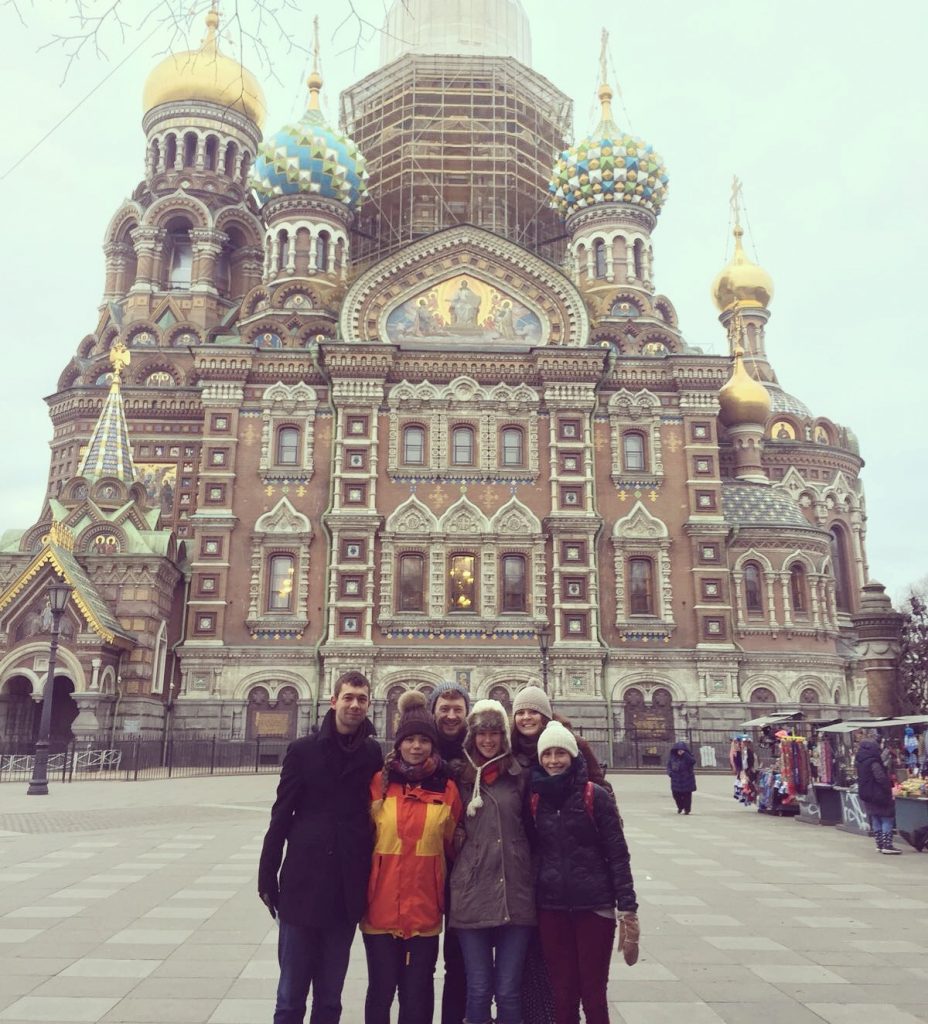
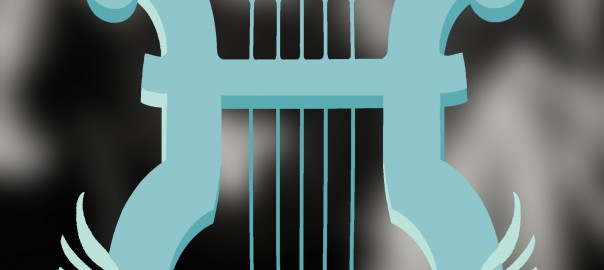
The subject of revolution and the revolution of 1917 in particular can but evoke an ambivalent response; the balance between improving and worsening the plight of whole populations is so fine that a philosophical distance seems the only appropriate one for the commentator. Hence the texts in The blood-dimmed tide range from an impassioned cry for the downtrodden man in Markham’s The Man with the Hoe to the cynical quatrain of Yeats’s The Great Day. I purposely chose authors from a wide political and geographic spectrum: American, Anglo-Irish, Polish-British and Russian.
The texts are a combination of extracts from poems and political or philosophical statements. The blunt directness of the statements makes a stark contrast with the reflective and allusive nature of the poems. Accordingly the statements are set in a recitative-like manner interspersed with the more lyrical poem settings, a pattern that provides the structure of the whole piece.
—
Bowed by the weight of centuries he leans
Upon his hoe and gazes on the ground,
The emptiness of ages in his face,
And on his back the burden of the world.
Who made him dead to rapture and despair,
A thing that grieves not and that never hopes,
Stolid and stunned, a brother to the ox?
Who loosened and let down this brutal jaw?
Whose breath blew out the light within this brain?
[Edwin Markham, from The Man with the Hoe]
The scrupulous and the just, the noble, humane, and devoted natures; the unselfish and the intelligent may begin a movement – but it passes away from them. They are not the leaders of a revolution. They are its victims.
[Joseph Conrad]
What gulfs between him and the seraphim!
Slave of the wheel of labor, what to him
Are Plato and the swing of[the Pleiades?
What the long reaches of the peaks of song,
The rift of dawn, the reddening of the rose?
Through this dread shape the suffering ages look;
Time’s tragedy is in that aching stoop;
Through this dread shape humanity betrayed,
Plundered, profaned and disinherited,
Cries protest to the Powers that made the world,
A protest that is also a prophecy.
[Edwin Markham, from The Man with the Hoe]
…nothing to lose but their chains…
[Vladimir Lenin]
The tree of liberty must be refreshed from time to time with the blood of patriots and tyrants. It is its natural manure.
[Thomas Jefferson]
Turning and turning in the widening gyre
The falcon cannot hear the falconer;
Things fall apart; the centre cannot hold;
Mere anarchy is loosed upon the world,
The blood-dimmed tide is loosed, and everywhere
The ceremony of innocence is drowned;
The best lack all conviction, while the worst
Are full of passionate intensity.
[William Butler Yeats, from The Second Coming]
Revolutions have never lightened the burden of tyranny. They have only shifted it to another shoulder.
[George Bernard Shaw, Man and Superman]
…nothing to lose but their chains…
Hurrah for revolution and more cannon-shot!
A beggar upon horseback lashes a beggar on foot.
Hurrah for revolution and cannon come again!
The beggars have changed places, but the lash goes on.
[Yeats, The Great Day]
…nothing to lose but their chains…
O masters, lords and rulers in all lands
How will the future reckon with this man?
How answer his brute question in that hour
When whirlwinds of rebellion shake all shores?
How will it be with kingdoms and with kings –
With those who shaped him to the thing he is –
When this dumb Terror shall rise to judge the world,
After the silence of the centuries?
[Edwin Markham, from The Man with the Hoe]
—
‘The blood-dimmed tide’ will be premiered at Kings Place on 16th February

The two songs I’ve written set fragments from two different poems by Marina Tsvetaeva (1892-1941), my favourite Russian poet, who lived a mix of conformism and non-conformism and a life of immense hardship writing prolifically as she went.
The first “I am living simply” (1919)
I am happy living simply
like a clock, or a calendar
This resonated with me and felt like a universally aspirational sentiment. But there is humour in there too because sometimes it feels like we are regimenting ourselves into simplification almost against our will, sacrificing the beauty of chaos which ultimately is impossible to keep out…
The other fragment is from a poem called “The poem of the end” (1923). I just found it quite simply, sad.
we’ve reached the end of the ending
and there is nothing left to lose
we’ve reached the end of the ending
so I stroke and stroke your face

Aleksei Gastev was one of the leading poets of the early Soviet Union; in 1922, Nikolay Aseev called him ‘the Ovid of miners and metalworkers’. He also became one of its key labour theorists, founding the Central Institute of Labour which trained over half a million workers in new methods of production, before being purged in 1939. In both aspects of his work, Gastev was obsessed with blurring the lines between human and machine, convinced that this was key to both creativity and productivity. The ten poems in Pack of Orders – the first five of which I have set – describe the creation and operation of what we now might call robots or cyborgs. The piece casts the four musicians as slightly malfunctioning androids, detailing Gastev’s vision with a mixture of cultish monomania and distracted confusion.
I began working on this piece in September of 2016. I had come across the text through my interest in filmmaker Dziga Vertov and composer Arseny Avraamov, who were both influenced by Gastev’s ideas; all three of these figures are pertinent to my research into music, mechanization and urbanization in the 1920s. But, with November’s election in the US, Gastev’s ideas took on a new relevance. The increasing capabilities of machines to do work more efficiently than humans, along with the deliberate weakening of unions, caused job losses and anger – anger redirected towards immigrants or ‘globalism’, with palpable consequences.
Gastev’s vision has not been fully realized – cyborgs have not replaced us – but a century of moving towards it has impacted every part of society. The blind, ruthless drive for increased productivity found in the early Soviet Union has some parallels in contemporary corporations and politicians. The human cost of the former was unspeakable; the cost of the latter, as it causes accelerating inequality and environmental destruction, is as yet undetermined.
‘Pack of Orders’ will be premiered at Kings Place on 16th February
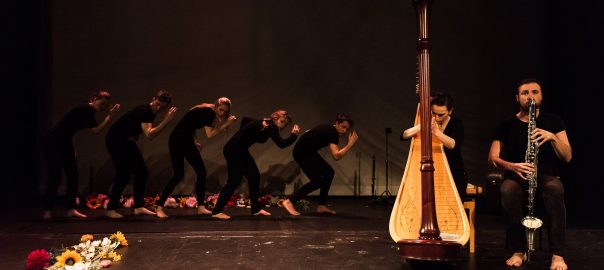
We had a wonderful time performing our Winter’s Tale to a sold-out Cockpit Theatre last week. The project was generously supported by Aldeburgh Music, Arts Council England, the RVW Trust, Hinrichsen Foundation and Britten-Pears Foundation. Some photos are available on our facebook page HERE and below are some lovely reviews (videos to follow!).
★★★★½ “groundbreaking” The Reviews Hub – full review HERE
★★★★ “wonderfully appropriate and left me with a nice warm feeling as I departed the theatre” London Theatre 1 – full review HERE
★★★★ “The musicians were excellent” Everything Theatre – full review HERE
“I was (…) delighted to have been there” Seen and Heard International – full review HERE
“makes this production so successful (…) resourceful and inventive” The CUSP Magazine – full review HERE
“Hopefully, this viewing of The Winter’s Tale won’t be the last. The Hermes Experiment is an ensemble that seems to tirelessly look forward, and reimagining Shakespeare in this way is an exciting trend to start” Schmopera – full review HERE
“This was a most impressive production that gripped the capacity audience from beginning to end” Early Music Reviews – full review HERE
photo by Cathy Pyle.
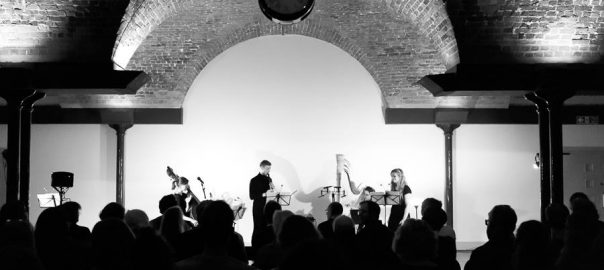
We had a great time working with new dots last month. The programme featured new works by Andrew Thomas, Jia Chai, a new song cycle by Freya Waley-Cohen and poet Octavia Bright, and a new piece devised in collaboration with poet Ali Lewis. The programme was completed by Josephine Stephenson’s tanka and Meredith Monk’s Double Fiesta. Below are the links to some lovely reviews and photos from the concert – many thanks to everyone who came!
“Fine work again from The Hermes Experiment tonight. All new music presented with real commitment and panache.” Classical Music Magazine (on twitter)
“Demonstrating boundless versatility and dexterity, ‘Lexicon’ was as much a showcase of new creative talent as it was of this gifted and exciting quartet” The Cusp Magazine – full review HERE
“All four of the Hermes Experiment shows great talent and virtuosity as well as being imaginative and provoking” Stephen Loveless – full review HERE
“All in all an excellent concert from a broad range of composers, masterfully performed by an excellent ensemble whom I’ll certainly be seeking out again” Alex Gowan-Webster – full review HERE
Facebook album available HERE – all photos by Cathy Pyle.
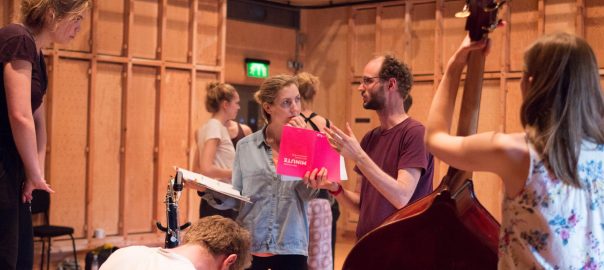
Compared with ‘normal’ composition, where one sits lonely at one’s desk for weeks or months at a time, devising a piece with other people is rather different: it is quite a bit quicker, quite a bit more unpredictable, and (if one is honest) quite a bit more fun. Luckily our visions were not too dissimilar: Nina Brazier (the director), The Hermes Experiment, the actors and I are all interested in layering text, music and movement together in a variety of ways, such that each strand is dominant or subordinate at different moments, sharing equally in the unfolding of the narrative. Sometimes we hope to excite or overwhelm; sometimes we hope that simplicity will move you. My position as ‘composer’ of the piece is precarious: while my name appears at the top of the score (a compilation of instructions, including only sparse musical notes), the music is as much by The Hermes Experiment as it is by me, since most of what you will hear is being improvised live, according to musical shapes and behaviours agreed in advance. The ‘folk song’ appearing in the second half is a case in point – particularly since it is the first tonal piece I have ‘composed’ in about 15 years! When someone suggested that a folk song would suit one scene well, the soprano Héloïse sketched out its opening melody; I then fleshed this out into a rough whole; finally Héloïse, Anne (who plays it later on the Harp) and I all tweaked it here and there until I no longer remember who was originally responsible for which note.
The Winter’s Tale will be performed at London’s Cockpit Theatre on 13th December 2016.
With many thanks to Arts Council England, RVW Trust, Hinrichsen Foundation, Britten-Pears Foundation and Aldeburgh Music for their generous support in the project’s development.
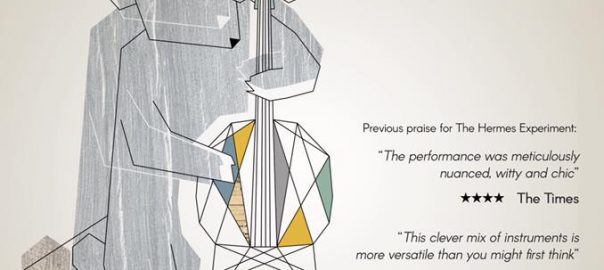
Check out our Winter’s Tale trailer and poster, and get your tickets for the 13th at The Cockpit!
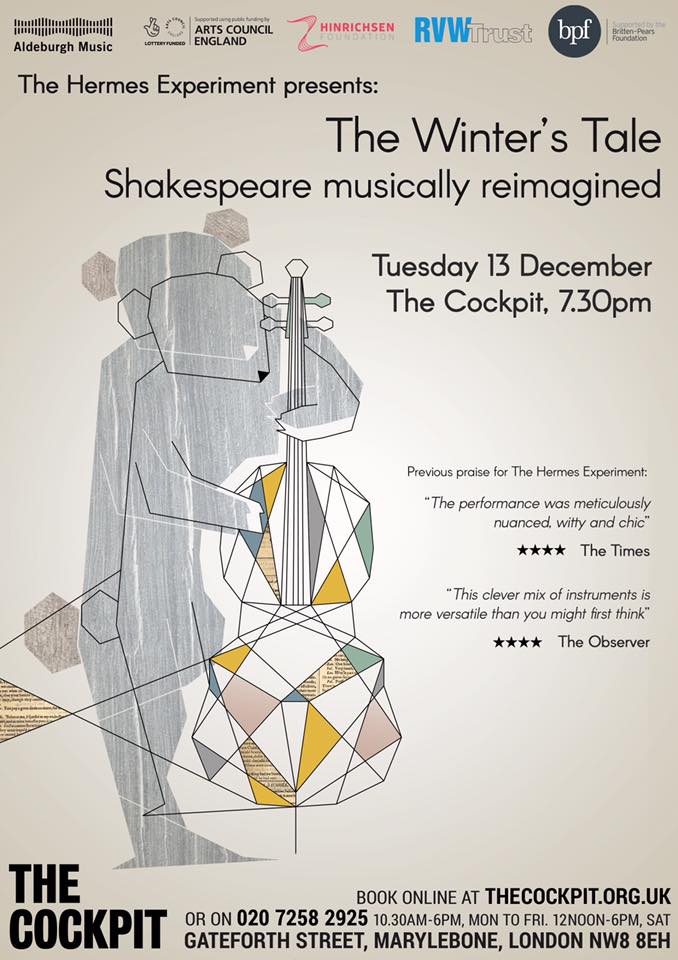
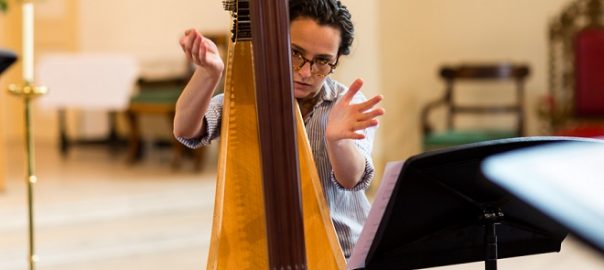
On Wednesday 31st August we arrived at St John’s Waterloo with our cohort of large (and small) instruments to meet with two of the composers with whom we are working as part of this Autumn’s New Dots concert project – Andrew Thomas and Jia Chai.
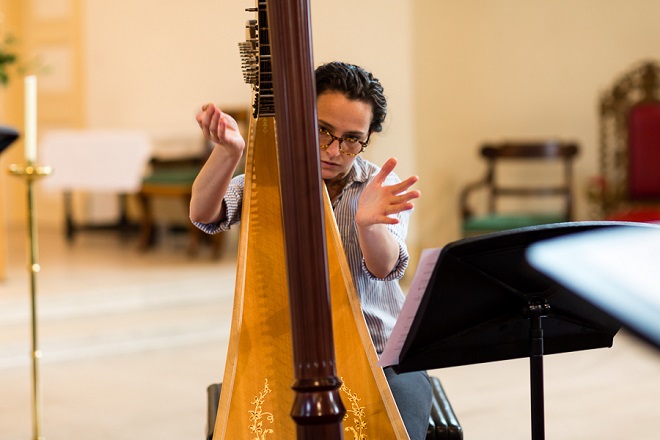
As a member of The Hermes Experiment, workshops with composers have become a regular feature of my schedule. They are incredibly useful and enlightening experiences (and this one was no exception), but I believe they are also more generally a very healthy element to have as part of a musical career. During these havens of experimentation, I am inspired by musical and instrumental ideas the likes of which I have never imagined before, I am motivated by witnessing the hard graft and dedication of composers to their incredibly demanding craft, and of course I am continually challenged beyond my comfort boundaries (something which usually includes highly implausible sight-reading challenges!). As a young professional musician, I count these workshops as invaluable opportunities for inspiration and development, and after a long summer break, our meeting last Wednesday was extremely welcome.
Working on the ideas for both the new works uncovered sounds that we as an ensemble have never created or experienced before. This is partly due to the inspiration behind the two new works: Japanese Noh drama for Andrew, and the sounds and intonation of spoken Chinese for Jia. It is fascinating to see how the two composers are using these diverse sounds, whether it be through inventive recreation on our own instruments, or in more abstract structural elements of their compositions.
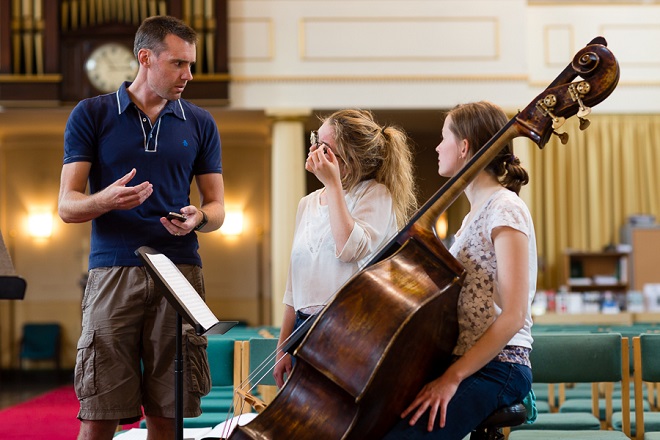
Andrew’s multi-movement composition ‘Flowers, aren’t they?’ challenges the ensemble in various ways. We have to blend as one, hold our rhythmic synchronicity in the midst of highly complex writing, pull off performative gestures, and explore semi-improvised sections. I felt exhilarated by the end! It was great to be able to work through the piece with Andrew, hearing and seeing his ideas come to life, receiving feedback, and experimenting with and developing some of his more fledgling ideas.
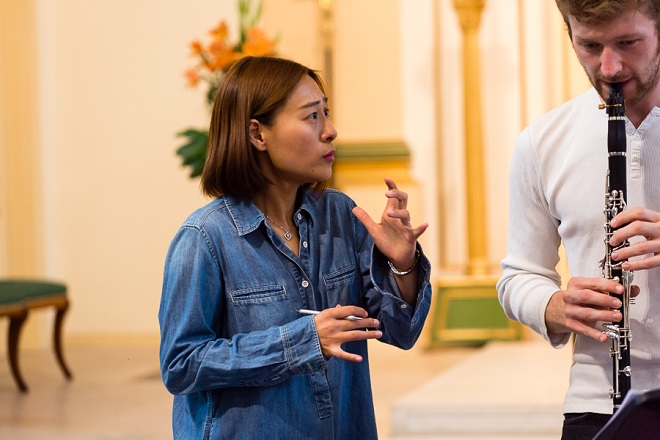
‘Still Night’ by Jia was equally demanding and interesting. A wide range of soundscapes were created, providing a backdrop for some incredible vocal sounds! We spent a lot of time working out the key mechanics of the piece, as well as discussing the challenging vocal pronunciations for Héloïse and some of the specifics of writing for the harp.
In short, we had a productive and interesting workshop. It is really useful for us as performers to have an idea of the pieces that we will be playing before receiving the final scores, and equally the composers can hear a live version of their ideas which I suspect helps them to consolidate and refine their ideas as they continue with their pieces.
Thank you to New Dots for inviting The Hermes Experiment to be the ensemble for this project – I can’t wait to see, rehearse and perform these two new works amidst the rest of the programme! The concert will be on Wednesday 16th November 2016 – watch out for further details!
photos by Cathy Pyle.
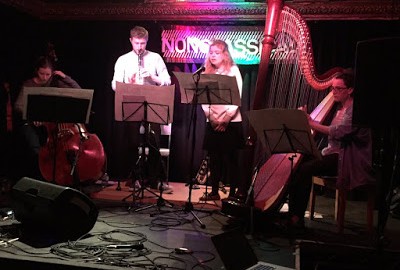
Some lovely reviews from our Nonclassical gig last week:
“The virtuosic skill of each member of the group was on display from the start” London Jazz News
Full London Jazz News review available HERE
“an ever-strengthening set from the Hermes Experiment ” The Prickle
Full Prickle review available HERE
Thanks to all who came!

THE HERMES EXPERIMENT: AUDITION NOTICE FOR “A WINTER’S TALE”
Contemporary ensemble The Hermes Experiment (Park Lane Group Young Artists and Winners of Nonclassical’s Battle of the Bands) are seeking 5 actors (3 men & 2 women) to take part in their upcoming project “A Winter’s Tale”.
PROJECT DETAILS
In light of Shakespeare’s 400th anniversary, The Hermes Experiment (harp, clarinet, soprano and double bass) will develop their new interpretation of Shakepeare’s The Winter’s Tale during their residency at Aldeburgh Music in September 2016, to be premiered at the Cockpit Theatre in December 2016.
They will work in close collaboration with director Nina Brazier and composer Kim Ashton, with the aim of highlighting key themes of the play through a condensed version of Shakespeare’s work. Each of the themes will become a ‘movement’ and will involve a different approach to the relationship between text and music.
They will be exploring a new mode of theatre that uses music and musicians as a vital part of the drama. Kim Ashton will lead the development of the music, which will include both improvised and semi-improvised elements and will be a central part of the work, not merely an accompaniment to the play. A group of actors will also be involved in the project, bringing life to Shakespeare’s colourful cast of characters.
“The performance was meticulously nuanced, witty and chic.” **** The Times
“This clever mix of instruments is more versatile than you might first think.” **** The Observer
“The combination of harp, clarinet, voice and double bass is not one you hear every day, but in the right hands it works brilliantly. The Hermes Experiment who sport this line-up have in a short few years commissioned prodigiously for it, opening a whole new expressive world” The Evening Standard
WORKSHOP AND PERFORMANCE DATES
– Aldeburgh Music Residency: 5-10 September 2016, with a work-in-progress performance on 10 September at an Aldeburgh Music Open Session
– 13 December 2016, The Cockpit, London (premiere)
– Additional performances in 2017 – dates tbc
You would need to be available for the entire duration of the Residency, the premiere, as well as additional rehearsals during the autumn (exact dates tbc).
FEE
– Aldeburgh Residency: travel expenses and accommodation provided
– Rehearsal period and premiere: fees will be confirmed in due course (funding dependent)
– Further performances: fees will be discussed on an individual performance basis
AUDITION DETAILS
16th June 2016, between 6.45pm-10.15pm – Lower Hall, St Gabriel’s Hall, St Gabriel’s Halls
Churchill Gardens, Pimlico, London, SW1V 3AA
To apply, please email [email protected] by 28 May 2016 with your CV and a short statement explaining why you would like to take part in the production.
We are looking to cast the following:
3 men:
Polixenes
Camillo/Antigonus
Leontes/Shepherd
2 women:
Paulina/Time
Hermione
For the audition, you will need to prepare one monologue/speech taken directly from The Winter’s Tale, and one short modern monologue, and be ready to work on both with the director in the audition.
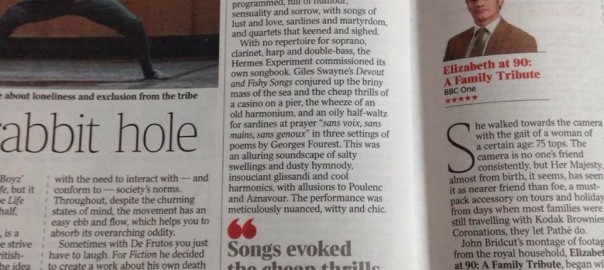
“The performance was meticulously nuanced, witty and chic.” **** The Times
www.thetimes.co.uk/article/park-lane-group-at-st-johns-smith-square-sw1-rtx3w6czl
“This clever mix of instruments is more versatile than you might first think” **** The Observer
www.theguardian.com/music/2016/apr/24/park-lane-group-2016-st-johns-smith-square-review
“The combination of harp, clarinet, voice and double bass is not one you hear every day, but in the right hands it works brilliantly. The Hermes Experiment who sport this line-up have in a short few years commissioned prodigiously for it, opening a whole new expressive world” The Evening Standard
“fine performances (…) splendid sense of performance art” Seen and Heard International (Mark Berry)
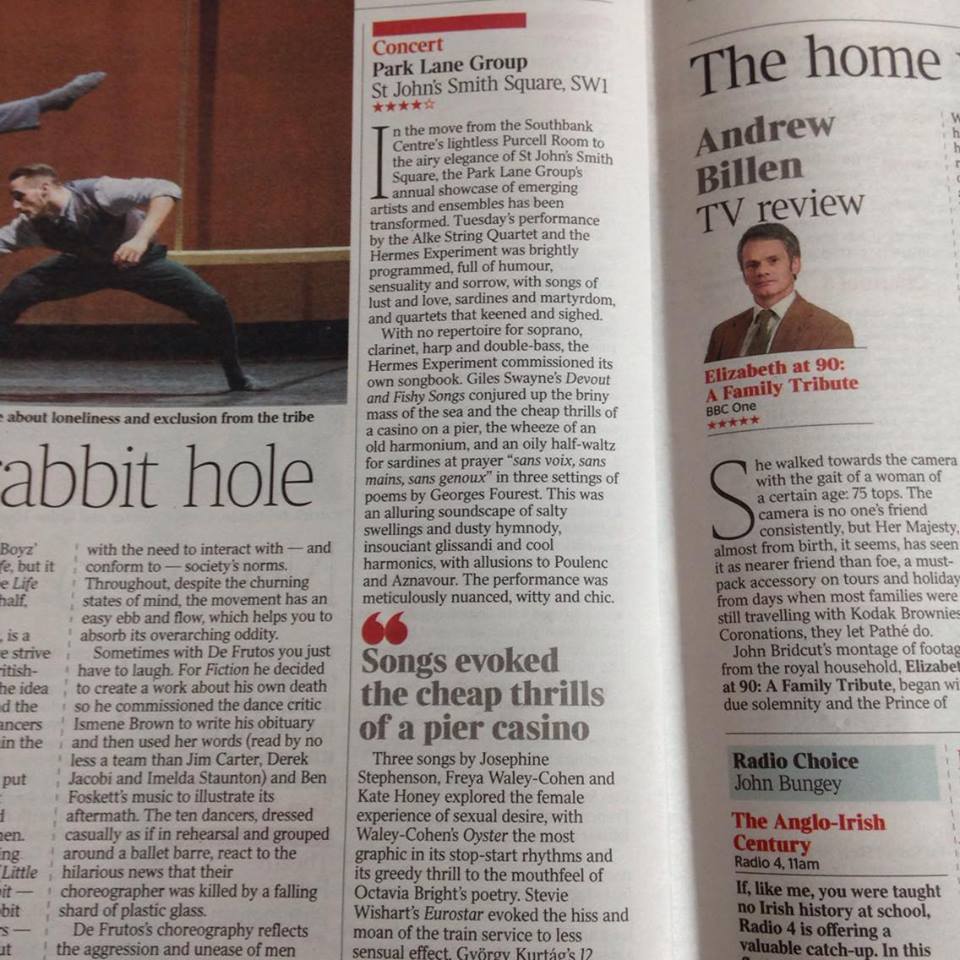
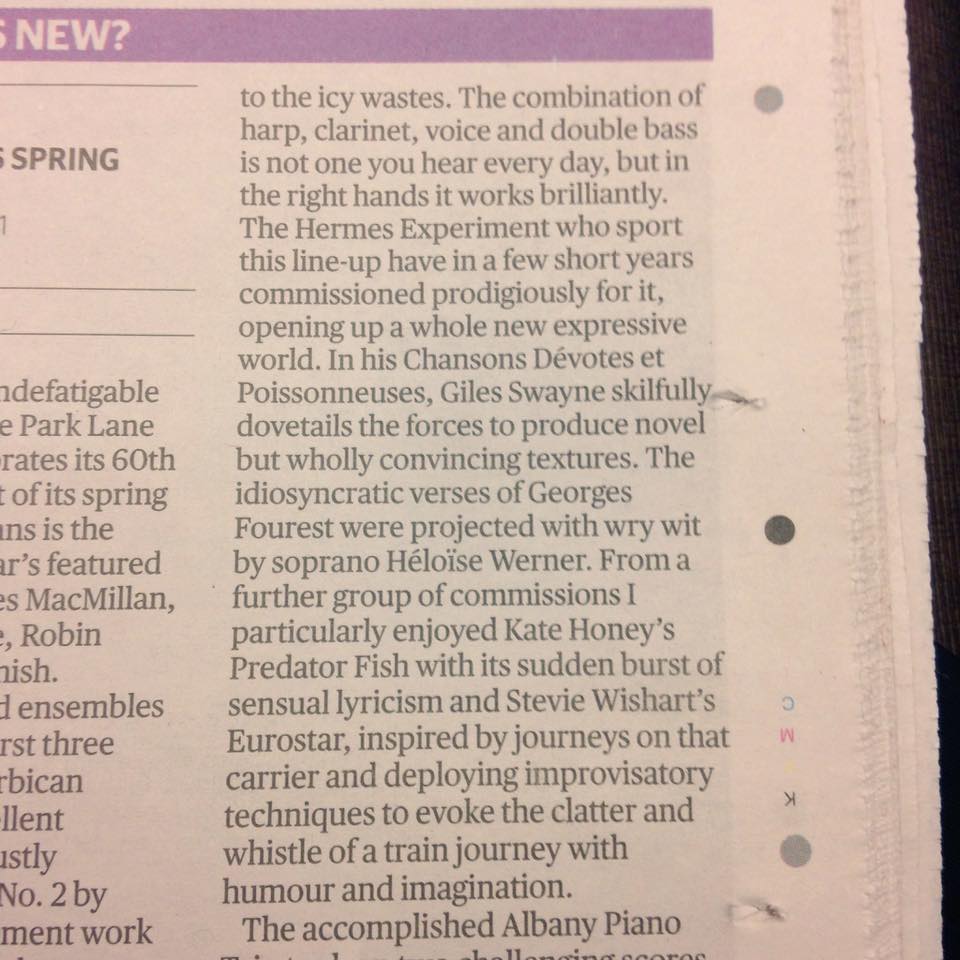
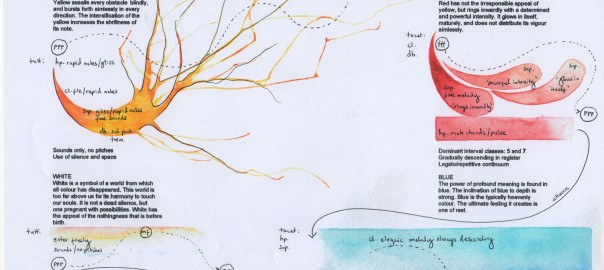
‘Kandinsky Studies’
In his book ‘Concerning the Spiritual in Art’ Kandinsky said ‘colour is a power that directly influences the soul. Colour is the keyboard, the eyes are the hammers, the soul is the piano with many strings. The artist is the hand which plays, touching one key or another, to cause vibrations in the soul.’
My new graphic score, written bespoke for the Hermes Experiment, responds to Kandinsky’s aesthetic with four short studies: ‘Yellow’, ‘Red’, ‘Blue’ and ‘White’ where I have painted a watercolour image for each colour responding to the emotional qualities Kandinsky assigns to them in his book. He describes yellow as a colour that ‘bursts forth aimlessly in every direction, red as having a ‘determined powerful intensity’, blue as being ‘the typically heavenly colour’ and white as being of a world that is ‘too far above us for the harmony to touch our souls.’ In addition to painting these images I have also annotated the score with further ways in which the musicians can emulate the colours through varying musical considerations such as timbre, rhythm, harmony, shape and dynamic. Whilst I am a synaesthetic composer, naturally linking intervals with colour, I am fascinated by the idea that there may some universal ways in which we can all respond to colour through music.
‘Kandinsky Studies’ will be premièred at The Forge on 16th February.
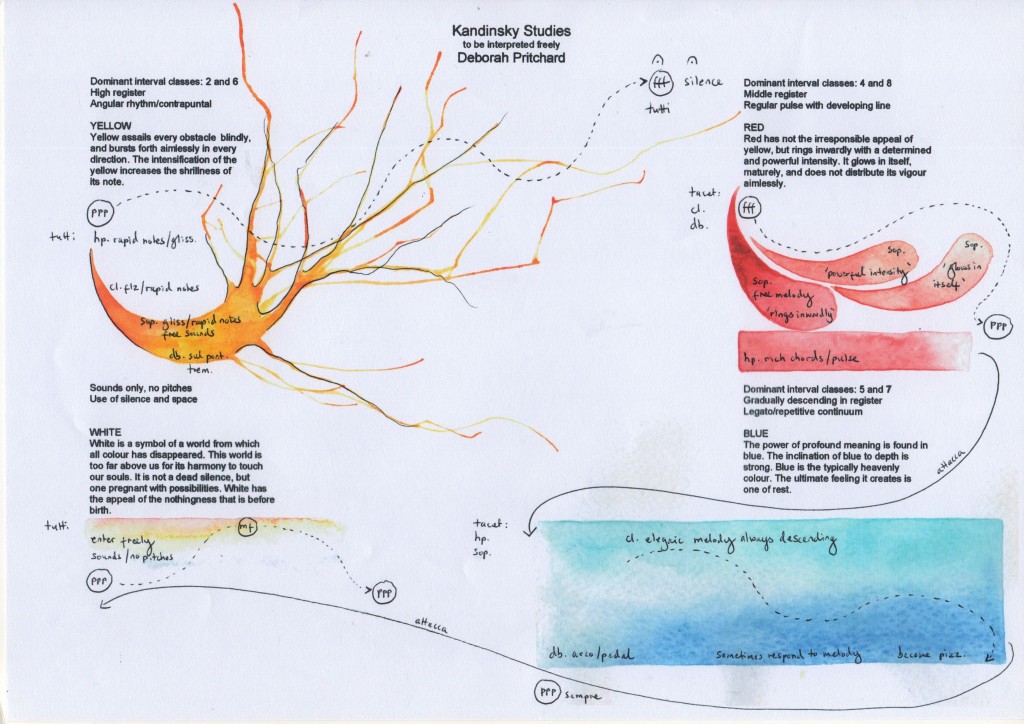

Mâh Didam
This piece endeavours to explore the links between Iranian music and Renaissance Counterpoint. While such musical systems seem wildly divergent, they do in fact share a great deal of common ground. Both are musics concerned with the horizontal rather than the vertical, with melodic lines rather than harmonic progressions, and with the aesthetic and moral primacy of the voice. One key difference between these musics, however, is their tuning systems. While Renaissance counterpoint – at least in its contemporary performances – uses Equal Temperament, Iranian music makes use of a tuning system built on natural perfect fifths and which contains 17 notes in an octave. This piece makes use of both tuning systems side by side, encouraging the listener to directly confront the differences between these musical worlds.
The words in this piece are from a poem by Rahi Mo’ayeri (1909-1968) and are translated as follows:
I saw the moon, it reminded me of your beautiful face.
Mah Didam will be premièred at The Forge on 16th February.
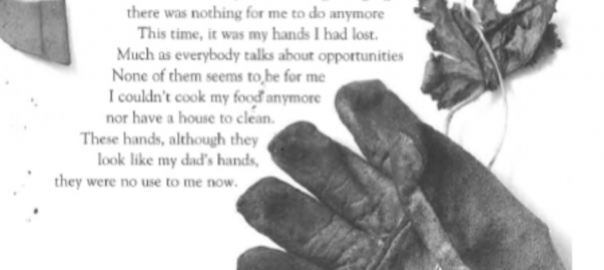
“I chose to set Nadine Tunasi’s beautiful poem My hands because of its directness and understated power. I wanted to reflect her words in the same way as the image of the glove and plant printed alongside them – strength in the face of displacement and adversity. I found it in a selection of poems created as part of the writing group ‘Write to Life’.”
Kate Whitley
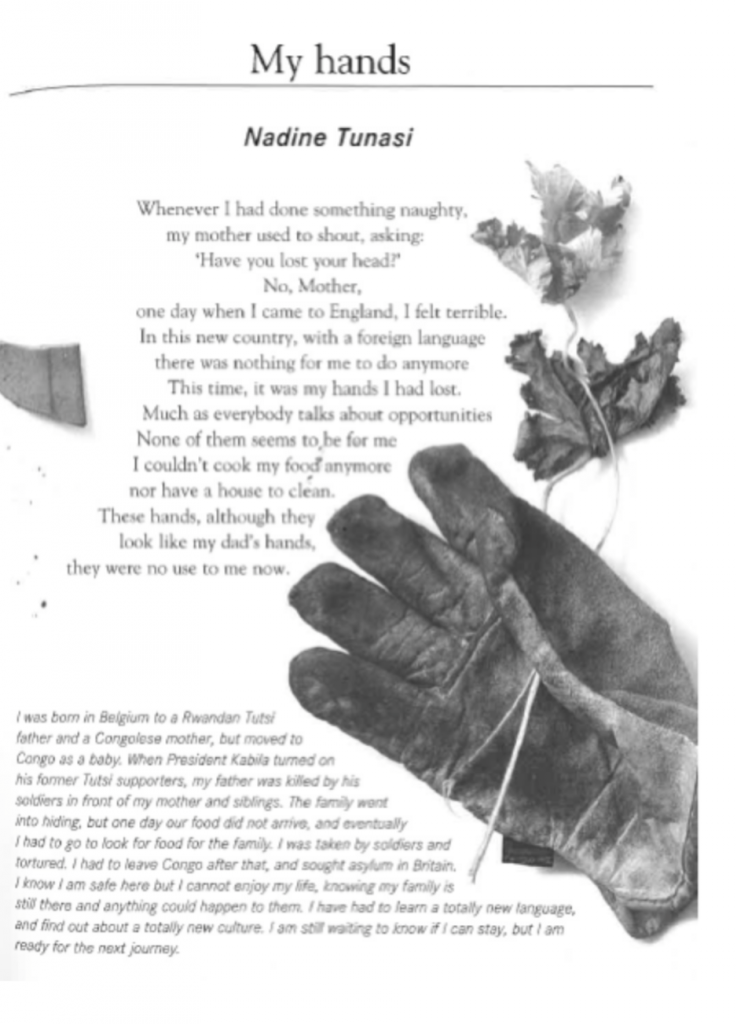
Kate Whitley’s piece will be premièred at The Forge (Camden) on 16 February 2016, 8pm.

We are extremely grateful to the RVW Trust and the Britten-Pears Foundation for supporting our project METROPOLIS – more dates for 2016 will be announce soon so stay tuned!
We are also very pleased to announce that both The Nicholas Boas Charitable Trust, Britten-Pears Foundation and Hinrichsen Foundation will be supporting our concert SONIC VISIONS at The Forge, Camden on 16th February 2016, featuring new commissions by Kate Whitley, Soosan Lolavar and Giles Swayne.

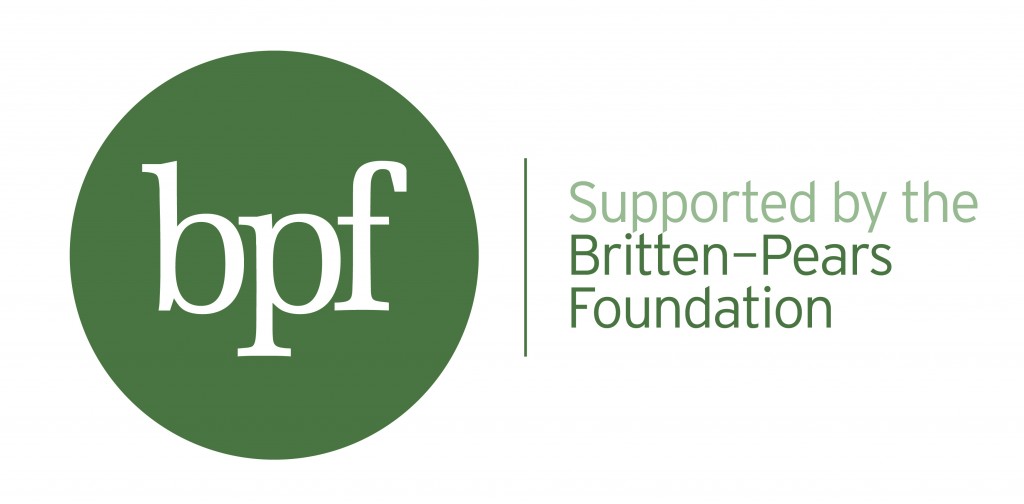
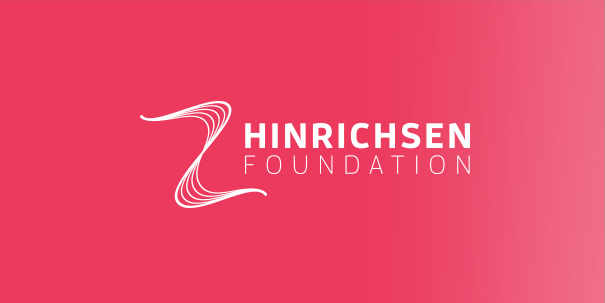
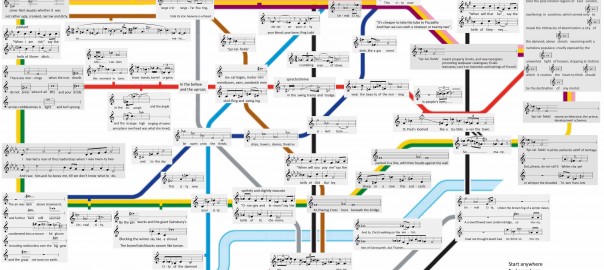
Lovely piece by Frances Robinson in CityMetric (the New Statesman’s cities site) on our concert METROPOLIS and in particular on Ewan Campbell’s beautiful tube map score: http://www.citymetric.com/transport/what-would-londons-tube-map-sound-one-composer-decided-find-out-1537

We were featured in the Evening Standard’s Londoner’s Diary last night: http://www.standard.co.uk/news/londoners-diary/londoners-diary-tony-talks-the-tory-language-over-migrants-a3101146.html
We will be giving the première of Stevie Wishart’s piece on 19th April at St John’s Smith Square.


“London, he felt fairly certain, has always been London.”
By Ewan Campbell
More than almost any other city, the London of today is inseparable from the many, many Londons that have existed. When I decided to write a piece evoking the city, it seemed futile to me to strive for a singular and personal response to this plethora of Londons, and instead I decided to compose a sort of London-soup.
The title is taken from George Orwell’s 1984 and is one of the myriad texts used in this piece, which have been taken from novels and poems inspired by the many faceted London. These include quotes from novels, such as Dickens’ description of Pip’s disgust at arriving at Charing Cross, or Woolf’s evocation of London’s excitement in Mrs Dalloway (“what she loved; life; London; this moment in June”), and even a quote from a Samuel Pepys’ diary about the great fire in 1666. There are extracts from poems: Wordsworth’s sunrise reverie on Westminster Bridge; D.H. Lawrence’s pre-war discovery of ‘the outcasts’ under Charing Cross bridge; the well-known folk-song “Oranges and lemons”; and several extracts from poems by Will Hatchet (Elephant and Castle: “At London’s gate it rose, democratic and utilitarian”).
The various texts are fragmented, both by the manner in which they are set to music (part-spoken, part-sung), and by the way that many of them are actually divided up and interspersed amongst their highly contrasting counterparts. This leads me, suitably tangentially, to an explanation of how the score is made up: in each performer’s part musical fragments (ranging from 2-20 seconds) are spread out over a 2-dimensional map-score, in which the performer has, at any given moment, freedom to choose which musical fragment follows which. This is a genre of composition that I have been exploring for some time, but for this piece I decided to base the score on the map that is most often associated with London: the underground map.
I wanted the four members of the Hermes Experiment to have autonomy to choose their own paths, independently of one another. Inevitably it is then impossible to predict not only what fragments will follow one another in one performer’s part, but also which of those will synchronise with those of another performer’s part. A composer like John Cage would take a philosophical approach, embracing the random sonic results. Unfortunately I find myself, not content with this, and instead embarked upon the lengthy process of making sure that every choice each performer can make at each junction is musically interesting. Then, in order to achieve some sense of unity between the parts, I sought inspiration from an unusual source: Terry Riley’s In C, in which the vast majority of the notes are (as you’ve guessed already), in C major. Those that are not from C major, are from suitably related keys, and the piece thus avoids anything more difficult than the very softest of dissonances.
I am not interested in the complete avoidance of dissonance, indeed I enjoy the full range of harmonic colours and flavours, but also want to prevent dissonance from overwhelming a piece, and perversely resulting in something bland. So, like Riley, I limited myself to a subset of notes (a slightly altered Phrygian mode on F, if you are interested), but also allowed myself a few alterable pitches (much like the deviations found in the melodic minor scale). The result will be unpredictable, made anew every time, and hopes to be more than just this composer’s subjective response to London.
The piece will be premiered at The Cockpit on 27th October: tickets are available here.
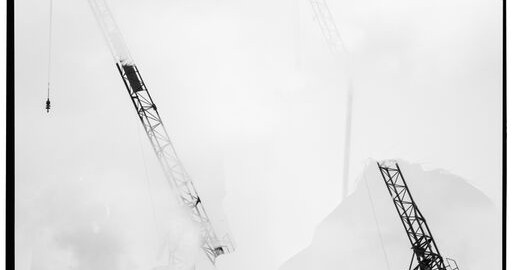
I was struck, in the photo of Thurstan’s I chose to set, by the careful superimposition at work. My original thoughts had been to write a wordless piece playing with a similar technique translated into music, with contrasting layers of sound waxing and waning in and out of focus and of each other. But I quickly decided to bring further meaning by introducing a text, and for this I called on my wonderful friend and collaborator Ben Osborn (Ben and I wrote an opera together last year). I gave him free rein, and Ben’s response to the photograph came in the form of a beautiful tanka-like poem describing the interaction of light and the shadows it creates throughout the day. Tanka is a form of classical Japanese poetry made up of five units (or five lines when romanised), and translates into “short song”. I had fun playing around with Ben’s words, realising that they could be effectively interchanged – which felt all the more appropriate when he admitted that the process of writing had involved a lot of swapping around!
The music reflects my interpretation of both Thurstan’s photo and Ben’s poem. It is slow, dreamlike and mysterious, and also somewhat bittersweet: a sound world inspired by the picture’s stark contrast between the warmth of the lovers’ embrace and the industrial backdrop against which it is set, two worlds made strangely yet beautifully at one by Thurstan. There is no narrative as such; instead the piece strives to be -like the photograph- a fixed moment in time, which expands as the words become confused. The voice is at the centre of the piece in its two outer sections, with the other instruments providing it with a setting and colouring the text, occasionally imitating and interacting with it. It becomes more instrumental in the short, textural and fragmented middle section. Finally, the beautiful parallelism between the cranes in the photo inspired a lot of the harmony’s movement. I can’t wait to hear The Hermes Experiment bring this little piece to life.
tanka will be premièred at Crypt on the Green on Saturday 20th June.
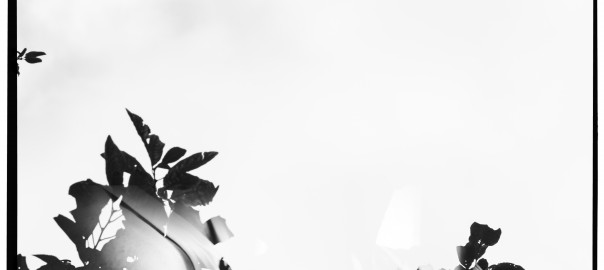
This photograph is all about absence – the gradual disappearance of the lovers from the image, physical contact attempted but not achieved.
Concepts of absence and distance are rich for musical expression, as demonstrated by composers of Romantic song, and the experience of loss is played out in this short piece. The clarinet and soprano begin in wordless intimate polyphony, weaving around each other before coming to rest around a few cycled pitches. Stabbed chords on harp and double bass then imply the breaking of the bond between the two lovers; the clarinet begins to spin upwards and out of sight, the soprano sinking further down while chasing the clarinet’s shadow.
The stabs lengthen and soften, becoming strummed chords over which the soprano mourns her loss in words by Theophile Gautier, a stanza omitted by Berlioz from his setting in the beautiful ‘Absence’ from his Les Nuits d’Êté. The image of the text is of wishing for wings to fly to a distant lover; while the two lovers end on the same note (E flat) they are still separated by an octave; while the clarinet remains on high, the soprano stays stubbornly earthbound while repeating her sobbing ‘Hélas’.
Absence will be premièred at Crypt on the Green on Saturday 20th June.
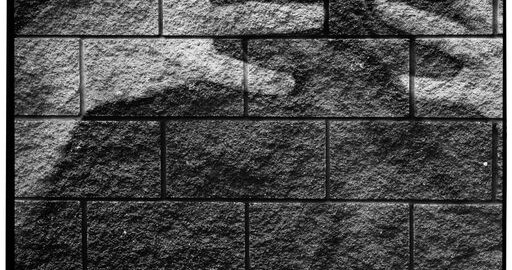
For me, the hands at the centre of this photograph instantly make it a very tactile image. They give a sense of the rough texture of the bricks they are superimposed on at the same time of as the tenderness and urgency of the way they grasp their lover. The way that the photo seemed to bring a very intimate moment to a public space – an East London street – inspired the subject and nature of Oyster. I turned to poet Octavia Bright, sharing both Thurstan’s Lovescape and my thoughts about it with her. Her sensuous poem Huit(re), which explores moments of sexual pleasure from a female perspective, was adapted especially to relate to this photograph. Oyster weaves together delicate melodic counterpoint and playful dance-like passages, as well as building textural fabric from within the unusual and fascinating instrumental ensemble to support Octavia’s words.
Oyster will be premièred at Crypt on the Green on Saturday 20th June.
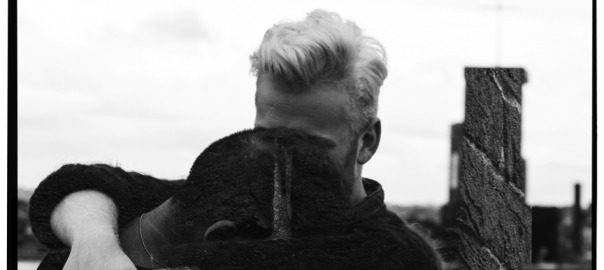
I was excited and challenged by the brief set me by the Hermes Experiment: to write a piece of music inspired by a photo. I felt there were various ways in which visual aspects of the photo might inspire the music. Moreover, since the photo will be projected on a screen during the performance of the piece, there are rich possibilities for audio-visual interaction – something I’ve always found mysterious and fascinating.
The piece I ended up writing, Predator Fish, is quite sectional in its structure; this, and the poetry which I’ve set, suggests a narrative. While some of the shade, shape and line of the picture (e.g. the overcast sky) influenced the spacious, harmonically ambiguous opening section, most of the influence of the photo came from the narrative I imagined. I imagined the photo as a scenario of societal oppression – a view influenced by the watchtower-like structure, the resistance graffiti, a same-sex relationship, the clandestine setting of a rooftop. I was moved by the affectionate embrace of the couple. To me it suggested a deep and devoted friendship; mutual support in the face of oppression.
The text I set covers various themes: dance and clubbing in the city, the love of Virginia Woolf for Vita Sackville-West, sex, letting the self ‘drain away’, the effects of beauty on the mind. This compiled text, while wide-ranging in theme, resonated for me with the ‘mood’ of the photo – a mood influenced by my imagined narrative. I compiled the text from poems by the Buddhist poet Yogaratna. As Yogaratna and I are a couple, writing this piece felt like both an exploration and expression of love.
Predator Fish will be premièred at Crypt on the Green on Saturday 20th June.
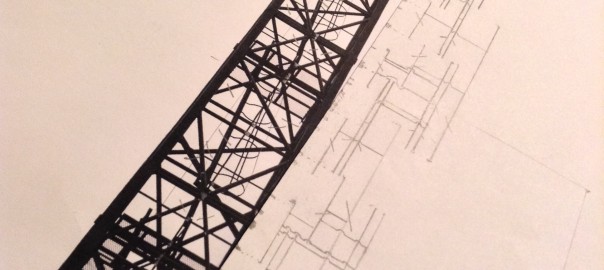
I really liked the stark web of angles in the photo – where the strands of the lattice connect from our perspective and actually, where the heavier verticals fall, the patterns that can be found, the journeys you can make from bottom to top by following one connection or another.
I analysed a section of the crane to measure lengths and connections, using this data as a source to develop music material – for example, in the opening section the pauses between chords relate to the distances between selected points along the crane.
I imagined the piece as a slowly moving gaze, starting at the bottom of the photo then gradually working up and taking in the whole picture, with the hand layered in and softly disrupting the bold, hectic order of the crane.
Inhabiting Sky will be premièred at Crypt on the Green on Saturday 20th June.
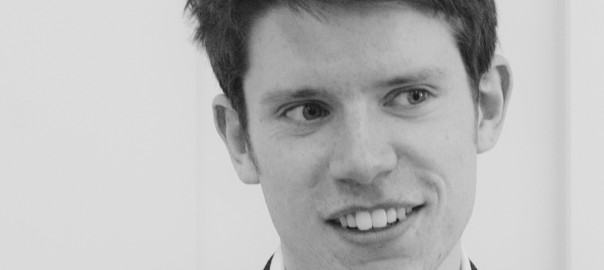
It was both exciting and daunting to be asked to write for The Hermes Experiment – exciting, because, after a few years of writing almost exclusively in a jazz idiom, it was a chance to reconnect with the world of contemporary classical music, and daunting, because I had not written for a ‘classical’ group for some time. As a jazz performer, I was also excited to write for musicians who could improvise, but were not jazz musicians. From seeing them perform in November 2014, I had an idea of the Hermes Ensemble’s improvisational skills, and I knew from the off that I wanted improvisation to play an important structural role in my work for them.
The idea for the piece began with an exchange with the group on Twitter – I joked that I would write them a piece of purest, darkest misery and call it A Joyful Noise. What started as a weak pun led to a real aim for the piece – to make something which was truly joyful, embracing elements of freedom and ‘roughness’ valued in jazz and in folk music. As a teenager, I had intended to become a ‘new music’ composer, but had found myself feeling constrained by the language of the music I encountered into writing pieces that sounded miserable and negative. The more time I spent listening to and playing jazz, and later Latin American, Middle Eastern and African music, the more my compositional language opened up and I felt more able to express positivity in my music, without feeling like I was rehashing or imitating old styles.
In A Joyful Noise, I have set out a sequence of musical events, but for certain sections left the timings of these and the detail for the musicians to improvise. Other parts are set and give the piece landmarks from which to hang the freer stretches. As a composer I enjoy the process of collaborating with performers, so rather than setting everything out for them in advance, we had a workshop in December 2014, to which I brought the kernels of the final piece’s three sections. This gave me the opportunity to test how well my ideas translated onto the group, but also to see how well the musicians could balance the individual freedoms of their parts with the need to listen carefully to the others in order to synchronise events. Fortunately, they were well up to the task, and I knew I could give them a finished piece which still left them a lot of freedom.
My recommendation to the listener would be not to try and work out what is improvised and what is not, but rather to keep an eye out for the interaction of the musicians. This is, for me, one of the most exciting aspects of seeing a great jazz group (or for that matter any kind of music in which improvisation plays a key role), and my aim with A Joyful Noise is that The Hermes Experiment and I can bring some of this spontaneity back to contemporary music.
OUR EXPERIENCE
While it may not seem like much of a task—especially after composing—deciding on what to say about a piece, any piece, but especially one of my own creation, is exceptionally difficult because no matter what you say (or don’t), you’re influencing the listening experience and consequently defining the piece before a single note sounds. This is no small matter.
So what to say? Most program notes talk about the form, the themes, the history surrounding a piece. Though that can certainly be interesting, I think it ultimately does a disservice to anyone listening to a piece for the first time because it tempts them into a rather static mode of listening and interpreting. Even more insidious is the potential of such program notes to define how music should be and, by exclusion, how it shouldn’t be listened to—who’s to say that just because a theme is the focus that the pure sound isn’t just as compelling or important? I really believe that there is no ‘correct’ way to listen and that no expert can say otherwise. At the same time, saying nothing leaves the listener either completely unprepared, prejudiced, or otherwise weighed down with previous experiences. So what to say? I think I’ll stick with some ‘facts’ and a humble request:
The Facts:
The piece is called If Winter and it is a setting of Thomas Ang’s poem of the same name. The text is delivered exactly as it appears in the poem with no words moved, changed, repeated, or omitted.
While quite free in many respects, there are structural elements that are quite rigid and (hopefully) readily identifiable.
Speaking of elements, there are quite a few for a piece that is only about four minutes long. Some change. Some stay the same. Sometimes it’s not the elements that change but the relationships between them.
The Request:
Don’t listen for the facts. At least don’t listen to the facts your first time; it’s not about them. Just listen. Listen and explore, as a child might, allowing each moment to just happen, then respond, intuitively, openly. Ooh that’s ugly! That’s kinda nice…and this bit makes me want to wiggle—I wish it would do that more! Don’t listen as a spectator, listen as a participant. When I handed over the music to The Hermes Experiment, it was no longer mine. When they play it for you, it’s no longer theirs. Each individual that listens to this piece, and any piece of live music, is engaging in a creative act: a composer’s idea, becomes the performer’s piece, which becomes the audience’s memory. Don’t listen as a spectator, listen as a participant: anticipate and react! My idea, becomes Hermes’s performance, which becomes your memory, and our experience. Let it be a diverse one.
For some people, it is difficult to justify tampering with music from the classical canon. I imagine it’s even less defensible to the same people to starting messing about with the music of Bach – his music is of course held in such reverence and, from a compositional point of view, it’s almost always seamlessly put together. Yet, I confess – I’ve done it, and on September 9th, The Hermes Experiment will give the first performance of my transcription of Bach’s aria ‘Seufzer, Tränen, Kummer, Not’ from his cantata Ich Hatte Viel Bekümmernis, BWV 21 in their exciting ‘Inspired by Bach’ concert at St John’s, Notting Hill. I imagine I’m less squeamish than some, though, about doing it. After all, we know that composers of Bach’s time thought about a musical score as material to be remorselessly adapted, rescored or downright stolen, and composers throughout the history of classical music have always rearranged, transcribed and generally had a good time messing about with music of the past.
Nevertheless, when approached by The Hermes Experiment and having suggested this aria for the concert, I did have to ask myself in what way a contemporary rescoring for a singer and a handful of instruments (one of which, the clarinet, post-dates Bach’s own time) could possibly illuminate or enrich the original. The aria itself is a true gem, and interesting in that it has no contrasting middle section, as most Baroque arias did. The opening material – falling, expressive gestures over steady but rich harmonic motion – is present in the aria from start to finish, with direction and momentum provided by extraordinary subtleties of texture and harmonic rhythm. It’s funny to think he probably wrote it in his lunch break, or between two choir practices or similar.
Anyhow, these characteristics have great implications for the transcriber (a more useful word here I think, by the way, than arranger, which seems to carry connotations of functionality). In this case, for example, contrast is clearly not the aim of the game, and it seemed more appropriate to support Bach’s original intentions by exploring the different possibilities especially of texture offered by the instrumentation of The Hermes Experiment than ending up disturbing the characteristic unity of the piece by trying to tamper with the actual notes and rhythms. It becomes clear quite quickly that it’s absolutely vital for any transcriber to begin the process by analysing the music in question in this way, so as to support or enhance the original, to let it speak in a new guise, than to betray or twist it.
On the issue of enhancement, there is another factor at play, and a more personal one at that. I’m fascinated by moments in music history where you can see a composer working absolutely at the limit of the musical language available to him or her. There are many examples, and I’m sure readers will have their own – the ‘Tuba Mirum’ from Berlioz’s Requiem springs to mind, as do many of Wolf’s Lieder. A particular favourite of mine is actually a moment at the centre of Thomas Weelkes’ motet ‘When David Heard’, when David mourns with the words ‘O my son Absalon, would God I had died for thee’. Weelkes sets the text with utter simplicity, and as sparsely as he possibly could have in the early 17th century – a single note, a single chord, another single note, a short phrase, a single triad, and so on. It’s an amazing moment, and in a way transcription (if practised sensitively) offers an opportunity to imagine what those moments would be like if the composer had access to a more extensive musical language. How far would Weelkes have gone? How far do we dare to go today? Whatever some might say, for me good transcription is perhaps less about messing around with the notes and rhythms of these great pieces, and more about engaging in a fruitful, illuminating (and hopefully fun) dialogue with great music of the past.
What was your personal motivation for forming The Hermes Experiment?
When we were forming the group, all of us had had experience of some sort or another in contemporary music. I felt as though by pooling our knowledge and experiences and using this as a starting point, we could make something that was greater than the sum of the individual parts.
Apart from the instrumentation, what would you say makes The Hermes Experiment unique?
What I see as unique in Hermes is a bunch of four performers genuinely willing to try anything. When training as a musician, the concept of ‘flexibility’ as an individual performer – being able to perform Mozart and Stockhausen in the same concert – is often drilled into us. However, it seems there exist very few groups that treat improvisation as seriously as they do Bach, or an outreach project for three year-olds, or a song setting about fish. Collaboration, diversity and commitment of approach, both as individuals and as an ensemble, are the things that we strive for.
What do you see as the key to The Hermes Experiment’s artistic identity?
It’s all in the perspective. Personally, whenever I see a string quartet, an orchestra, or whoever really, programme a contemporary piece, it’s more often than not seen as an add-on, an extra, the obligatory modern stuff to demonstrate the ensemble’s versatility. Why is that? In my opinion, it’s because the ensembles themselves (orchestra, string trio, choir) come from the classical (and earlier) traditions. This means that modern music is always viewed from the perspective of a ‘classical’ ensemble, as something inherently freaky and weird. What happens, then, when you totally reverse the perspective, when you look down the other end of the telescope? Even though we set up contemporary music to be ‘the norm’, this doesn’t mean that we see baroque music as unapproachable – far from it! We just see it and communicate it in a different way. By utilising a (to my knowledge) never-before used combination of instruments, we instantly open up fresh possibilities, feeling no pressure to learn or perform ‘the classics’ – because there are none!
How do you plan to tackle the potential inaccessibility of contemporary classical music?
There is without doubt a stigma around the term ‘contemporary music’. However, I believe that ‘contemporary music’ has undergone a lot of change recently – and it’s up to us as performers to articulate that difference. Whereas composers, say, 40 or 50 years ago were composing ‘aggressively’ into a niche only understood or even approached by a few, nowadays I believe that there’s a genuine desire – on the part of both composer and performer – to (re)connect with audiences. It’s this connection that’s key to the accessibility. If someone approaches a piece with the assumption that it was composed for someone more intelligent than them, then of course it won’t make any sense! What our job is is not to dumb things down because we think people ‘won’t get it’ otherwise; it’s to show people that there exists a genuine, tangible relationship between composer, performer and audience. Composers want to write things for performers to play, and we as performers want to perform them to you. There’s a lot of beauty and expression to be found in modern music, and if the approach is right, this beauty comes across surprisingly clearly!
What would you say is the most interesting part of the creative process you go through with each commission?
It’s hard to pinpoint one exact moment, as it varies depending on the type of work we’re undertaking. With heavily ‘notey’ pieces (works with many complex rhythms and ideas all flying around), there always seems to be a moment of things clicking into place. It often creeps up and surprises you. You begin with hours of individual practice, then moving to the ensemble rehearsal, often with a metronome at painfully slow speeds. Just when it feels like you’re hitting your collective head against a brick wall, then click – it falls into place, and you have a piece!
Thinking of the ensemble’s future plans, what are you most excited about?
We have almost 20 composers lined up for our next season, and so the sheer diversity of what will be winging its way to us is exciting enough! We often draw on materials and textures from our pieces in our improvisations, the former aiding us in developing our collective ‘voice’ as an ensemble in the latter. I’m looking forward to seeing how our new commissions inspire us and help us to find ever-new ways of making music together.
Héloïse on learning the Aperghis:
“How on earth did you memorise all this?”
This is always the first question I get from people who’ve watched me perform this piece. Well, the trick comes from the way the ‘music’ is written; it looks like this:
Now, you may think this looks incredibly complicated, but once you get it, it really isn’t. If you follow the ‘score’ line by line, you’ll realise that at the start of every line, a new bit of text or sound is added. So it’s just a matter of memorising the fragments and in which order they come.
However, although Aperghis’ score is very clearly notated, a lot is also left open for interpretation and so I came up with my own narrative. This, for me, was the most fun and fascinating phase of the learning process. But I won’t reveal what this narrative is – it would take away from the fact that interpretation is left open to the audience as much as to the performer…
Enjoy!
What was your personal motivation for forming The Hermes Experiment?
For me, the founding ideas of Hermes, especially the emphasis on extending the boundaries of ‘new’ music and improvisation, were really exciting. As a bass player specifically, I knew that the technical demands of the new repertoire would be challenging, but this virtuosic element was also an attractive prospect. By pushing yourself to have a technique without limits, you give yourself the ultimate freedom of expression in improvisation.
Apart from the instrumentation, what would you say makes The Hermes Experiment unique?
The status of each group member as a mini composer/arranger; this could be in the traditional sense of putting pen to paper to create something for the group, but also in the sense that each member is a composer in real time during group improvisation. Each member also has a strong creative input into both the in-rehearsal musical decisions as well as the artistic direction of the group.
What do you see as the key to The Hermes Experiment’s artistic identity?
Open-mindedness to new scenarios for musical communication, be this new venues for performance, unusual collaborations or new musical structures. Rather than our instrumentation and lack of repertoire being a limitation, it is actually incredibly liberating for us as a group as we know that we are creating something entirely new, with few existing conventions, so in a sense we don’t feel like there are many creative barriers for us.
How do you plan to tackle the potential inaccessibility of contemporary classical music?
Another key element we hope will always be at the core of our artistic identity is the insistence on making our performances communicative and compelling, in both their musical and extra-musical content. We all feel that new music should never be an in-joke, and audiences should be able to relate to a piece without being patronised.
What would you say is the most interesting part of the creative process you go through with each commission?
In our most recent project, it was a real pleasure having the composer present as an active participant at nearly all rehearsals; in most of our previous experiences of new music projects, composers tended to be brought in at the last minute. There was an amazing stage we got to once the piece had really taken shape and we were fine-tuning exactly how to make the performance most effective. We all felt invested in the piece and the composer’s vision, and had equal input into performance decisions.
Thinking of the ensemble’s future plans, what are you most excited about?
I’m excited about several new collaborations in the pipeline for our next season, including projects with artists from other domains. In the next year, we are commissioning works from new composers whose music I already know and love, and it’ll be fascinating to see what they produce for us. It’s really exciting to be part of a group that is evolving so much with each new project.
Ahead of (and as part of ) our performance on the 5th June, Nonclassical launched a competition asking for submissions of new graphic scores for us to film and also perform on the night. The competition is open until midnight on 4th June, but we have already received some truly fantastic entries.
Here are some of the entries we have received so far:
SPILLIGAN p. 7 – Christie O’Regan
See a performance of it here: http://instagram.com/p/oi19-eCSAJ/
Woven visual score – Annie Milward
See a performance of it here: http://instagram.com/p/oi21quCSB2/
Murmurations no. 1 – James Joslin
See a performance here: http://instagram.com/p/oi3o2GCSDH/
Other wonderful entries included:
Schilderwald – Dan & Diego Di Maggio
Anatomy – Adam Young
Keep sending your entries in! We will perform the best ones on 5th June, 8pm, Shacklewell Arms.
My piece is a setting of a poem by American poet Mark Strand, called Black Sea. I really love Strand’s poems – I remember when I got his book New Selected Poems, as usual I put in bits of paper to mark inspiring poems I might set, and at the end finding the book completely full of paper scraps with more poems marked than not! I’ve set several of his poems before, including his poem XXXV in my piece The Sickness of Angels: http://youtu.be/3A35ucEYIWA.
It’s hard to pin down exactly what in his work appeals to me. Certainly in XXXV and Black Sea there’s a profound and intense emotional sense, which is nuanced and detailed but still has a big impact. They both have a beautiful, lyrical flow and are full of colour and expression, with phrases like “…watching the slow swells of the sea / break on the shore and turn briefly into glass and disappear…” (Black Sea) and “the feel of kisses blown out of heaven, / Melting the moment they land” (XXXV).
There’s often a sense of loneliness too – in Black Sea the subject tells us how they went out into the night and gazed over a wide open empty sea, waiting and longing for someone (‘you’), before resigning themselves to disappointment and questioning why they could ever have expected the ‘you’ to come to them.
Read the whole poem at http://writersalmanac.publicradio.org/index.php?date=2012/05/01
Black Sea has a clear, powerful emotional theme which helps suggest musical atmospheres and ideas for the whole piece; those expressive colourful phrases – ‘sky strewn with stars’, ‘whispering night’, ‘hair mingling with the sea’ which give so much scope for expressive vocal lines and development of ideas from moment to moment; and a very clear build of expectation and hope and imagination through the piece before the resigned final section, which gives a clear structure for the piece.
When I picked this poem to set I was looking for something that I thought work really well for The Hermes Experiment line-up and the personalities of the performers. I’ve worked with them before and during the writing of the piece, discussing ways to realise my ideas, use the instruments and voice effectively, how to best express in sound what I see in poem, for example a very clearly defined, almost brittle harp sound used particularly around the opening lines about night and stars, and a rising, faltering sound on the bass which sounds almost as if it’s disappearing, slipping beyond reach.
Ed’s piece will be premiered on 5th June at the Shacklewell Arms, 8pm.
More details here: http://www.nonclassical.co.uk/index.php/2014/05/june-5th-2014-graphic-score-special-with-the-hermes-experiment/
Jonathan Woolgar, one of our composers, talks about the first rehearsal of his new piece, Scenes from the Garden of Love, with the ensemble:
My piece for The Hermes Experiment, Scenes from the Garden of Love, is quite a substantial one at over 15 minutes long, compiling William Blake poems and biblical texts into a series of dramatic tableaux. All in all I worked on it for over four months, and indeed was rather sad to see it go when I finished it and sent the parts to Héloïse, Oliver, Anne and Marianne ahead of our first rehearsal on 29th April. First rehearsals are always a strange experience for a composer. The music which was so crystalline in my head suddenly becomes something real and fragile — it can be a disconcerting experience, but also a thrilling one. There is often a degree of relief when things work just as you wanted them to, or frustration when you realise that you hadn’t made yourself as clear as you thought. The 29th, though, was a wholly positive experience, each performers’ contributions already sounding polished. Indeed, it’s been a joy to write not only for the unusual combination which is initially so striking about The Hermes Experiment, but for the four individuals who bring it to life. The feeling of confidence in writing for such trustworthy players is joyous, especially with regard to Héloïse’s dramatic capabilities (see the performance of Récitation No. 9 by Aperghis on this website!) which initially encouraged me to create a dramatic piece in the first place. I am truly excited about the upcoming rehearsals as increasingly we all become co-creators in this drama, as each tableau goes from being a section of music to being a living theatrical event. Thanks to the versatility and experimentalism of an ensemble like this, the potential is endless. What a treat for a composer.
Jonathan’s piece will be premiered on 14th May at the Notting Hill Mayfest. More details here: http://nottinghillmayfest.org.uk/concert/hermes-experiment/
On behalf of the rest of the group, Anne talks about why improvisation is key to The Hermes Experiment’s musical identity, and sheds light on how it all works:
At The Hermes Experiment, we love new music, and live improvisation is probably the newest music you will ever hear – created in the moment, as fresh to our ears as it is to those of the audience. As an ensemble, we really enjoy the musical interaction of improvisation, but the question we asked and continue to challenge ourselves with is ‘how do we make this as enjoyable and interesting for the audience as it is for us as performers?’ One of the primary tenets we came up with was to create some sort of vaguely perceptible structures and qualities for the interaction. So as a starting point, we developed a game a bit like musical tennis doubles, where we play in two pairs, batting musical ideas back and forth; if both members of the same pair play together, there is a choreographed forfeit, and Oli can initiate moments of calm, while Héloïse can initiate phases of hysteria. As we became more practised at improvising together, we became freer to move away from these structures whilst bearing them in mind as a backbone.
Another key feature of our improvisation is that we like to use motifs from the works featured in the concert as root musical ideas. What you don’t see in this video is that we used an initial game of ‘rock, paper, scissors’ in front of the audience to determine which motif would be used. In this improvisation, it was Oli’s chosen motif from Messiaen’s ‘Abime des Oiseaux’ for solo clarinet.
Our harpist, Anne, reflects on her relationship with Sally Beamish’s Awuya:
Awuya was commissioned by Glasgow University to celebrate the groundbreaking work of Professor Keith Vickerman in the field of African Sleeping Sickness. There are three main themes at the root of the work; firstly, the changing forms of the deadly pathogens of the disease – trypanosomes. You’ll hear repeated, slightly varying, pitch and rhythmic patterns within the dense substance of the music. Secondly, the sounds of African drums are incorporated into the work via a vocabulary of percussive effects using different parts of the hands (yes, it hurts to practise!). The third key feature is the central lullaby that originated in a central African tribe decimated by sleeping sickness during the 1940s. ‘Awuya’ is the name of the young girl to which this lullaby was sung, and the original words are as follows:
Awuya, eh, your mother does nothing
She crushes no ground nuts and draws no water
Awuya, eh, your mother goes nowhere
Neither to catch fish nor to look for snails.
I have been working on and performing this piece since 2009, and last year had the honour of working with Sally Beamish on a film project of the work. Awuya is one of the pieces in my repertoire that calls me to think about how we as performers build relationships with pieces that we engage with, especially if we work on them over months and years. I see and hear different patterns and shapes each time I return to the work, and in each performance there is a different balance of speeds, sounds and atmospheres. When I walk on stage to perform Awuya, I feel that I go on with a long-standing, much respected friend, with whom I have a living, developing relationship.
For Anne’s recent film project of Awuya, see: https://www.youtube.com/watch?v=Ux3YosKD-9I
What was your personal motivation for forming The Hermes Experiment?
During my time at university, I was very involved in both the performing and production sides of various musical and theatrical events. I really loved doing both, though I would sometimes get frustrated when I didn’t have any artistic input into the shows I was producing. I knew that after graduating, I would somehow want to combine performing and producing to make it my job! So after spending a long time over the summer thinking about how I could make it happen, I came up with the idea of forming an ensemble which would somehow involve all the things I enjoy doing: performing, producing, music and theatre …
Apart from the instrumentation, what would you say makes The Hermes Experiment unique?
As a result of our unusual instrumentation, the music we play is very ‘unique’. Indeed, none of the pieces we perform have ever been played by anyone else before, since we either commission them or create them ourselves. So yes, what we offer artistically is pretty special!
What do you see as the key to The Hermes Experiment’s artistic identity?
The great thing about Hermes is that, apart from the instrumentation, we haven’t set any limitations: we can arrange pretty much anything for our combination as we want. For example recently, we came up with the idea of arranging Bach preludes and fugues from the Well-Tempered Clavier (both ourselves and by collaborating with composers). And it really works. When talking to composers, we also like to give them a lot of freedom as we are all extremely keen to try out new things and explore new sound worlds. Because there isn’t any existing repertoire for our combination, we’re having to build our own as we go along; and that I believe is one of the keys to our artistic identity.
What would you say is the most interesting part of the creative process you go through with each commission?
I find all stages of the creative process really exciting; but perhaps it becomes even more exciting once we’ve all got to know the music well and can properly start work on interpretation and performance. It’s truly fascinating to be able to work, with the composer, on the performing side of things to try and really make the piece live. And often, this relies on understanding how the different parts interact with one another. This requires so much focus and energy (which might be why I am always starving after two hours of Hermes…) but to me, it is the most fun!
Thinking of the ensemble’s future plans, what are you most excited about?
I think we are currently in this great position where all of us are very keen to make Hermes a major part of our musical career. Whenever we discuss our future plans, which include projects involving collaborations with other art forms such as photography or dance (those are the ones that I’m looking forward to the most and are to be revealed soon), we get so excited and I am confident that we will make them all happen in the near future…
Our clarinettist, Oli, discusses the Piazzolla:
The last movement of Histoire du Tango appealed to me for a couple of reasons: firstly, this movement is a real fusion of old and new, traditional tango rhythms rubbing shoulders with contemporary harmonies; secondly, the original instrumentation of flute and guitar – melody plus rhythmic accompaniment – provided an ideal point of departure, to explore how every instrument – especially the harp and bass, the two more ‘accompanimental’ instruments of our Experiment – can dip in and out of both roles. I began the arrangement with what you might expect: Marianne hammering out the tango bass line with Anne providing the ‘quasi guitarra’ accompaniment (plucking the strings close to the soundboard for an extra percussive effect). Another sound I was exploring throughout was the combination of Héloïse’s voice with the clarinet: at points they sing together in hybrid ‘sopraninet’ unison; at other times they diverge, sometimes taking the spotlight, sometimes merely commenting on or responding to the other’s actions.
The rehearsal process of the Piazzolla was largely similar to our collaborative approach with composers’ new works. We were constantly revising, changing, modifying things; the score I took to the first rehearsal was by no means the finished product. This gradual process of exploration meant that by the end of it, what we had was not just an arrangement of mine, but a piece that the group had real ownership of, and could consequently have real fun performing…
What was your personal motivation for forming The Hermes Experiment?
When Héloïse suggested forming the ensemble, I was keen from the start. I have always loved contemporary music, and the small forays I had made into free improvisation in the past had been really stimulating and affirming. Also, I was (and still am) at a stage in my career where I am looking to invest in collaborations and projects that I can see forming a core part of my future. It also didn’t hurt that the other prospective members were already valued friends!
Apart from the instrumentation, what would you say makes The Hermes Experiment unique?
For such a ‘niche’ looking ensemble, I think we are exploring a relatively broad range of avenues, the three main categories being new commissions, arrangements, and live free improvisation. I think we are offering a concert experience that is at once all about contemporary classical music, and very dynamic and diverse. Our approach to working with composers and other collaborators is also important in that we are as interested in the process behind each work as in the end product.
What do you see as the key to The Hermes Experiment’s artistic identity
I think the main key to our artistic identity is in the name – experiment; in all areas of our work, whether improvisation, performance, or collaboration, we aren’t afraid to try new things. This has already led to new ideas and discoveries, and this is a core part of what we have to offer.
How do you plan to tackle the potential inaccessibility of contemporary classical music?
The main reason that contemporary classical music is potentially inaccessible is that it is largely written in an unfamiliar musical idiom. In other words, audiences find it hard to relate to. Of course, we can’t make the new sound worlds of contemporary music suddenly familiar. However, we can aim to make them as engaging as possible, through successful collaboration and performance, and also as interesting and contextualised as possible through spoken programme notes and writing, such as in our blog.
What would you say is the most interesting part of the creative process you go through with each commission?
For me, the moment when we first see the initial draft, or key ideas behind a work, is incredibly exciting – it’s like opening a present early, but knowing that it is only going to get better and better. But perhaps what I find most interesting – in fact it amazes me every time – is looking at the overall trajectory from the first read-through to successful performance. Both as individuals, and as an ensemble, we spend extensive time getting to know each commission, investing effort not only into realising the composer’s ideas, but also into presenting an engaging performance for audiences. I take great joy in becoming so deeply acquainted with a work – I believe that it is through this level of investment that vivid performance is born. I also hugely enjoy the fact that with new commissions, it’s always possible to talk with the composer in order to explore and clarify ideas – a luxury that we are unfortunately denied for most classical music today.
Thinking of the ensemble’s future plans, what are you most excited about?
I am generally very excited about everything we are doing! In the longer term, I am really looking forward to potential collaborative projects with other types of artist, as well as exploring what we can offer in a creative learning context.
What inspired you to join The Hermes Experiment?
I think The Hermes Experiment has great potential. It’s an interesting and well though-out combination of instruments, which really works! There are a number of ensembles that venture into contemporary music, a great example being the Britten Sinfonia, but there aren’t many ensembles that have a fixed and unusual instrumental line-up – so I like to think we’re working with something quite new and exciting here!
I’m joining The Hermes Experiment in the role of Director (Marketing and Development). As part of my remit I have reworked the ensemble’s approach to marketing, which will now focus on offering insights into the creative process behind each commission, as well as insights into the members’ perceptions and interpretations of the pieces in the group’s repertoire. My role also covers planning and implementing a longer term strategy for the group, which so far has included coming up with ideas and planning our 2014/15 season. Read on for a preview of our plans….
What do you see as the key to The Hermes Experiment’s artistic identity?
Due to the combination of instruments being so unique, new commissions naturally form a key part of the ensemble’s identity. I think Hermes could become a truly great platform for creating new art and music, and the feedback we’ve already received about the idea of Hermes, whether audience members, composers or other established musicians, has been overwhelmingly positive.
How do you plan to tackle the potential inaccessibility of contemporary classical music?
I think contemporary music can very easily become inaccessible – people get scared off by a programme where they don’t recognise the name of a single composer. But one of the things I want to introduce and establish with Hermes is really engaging its audiences, which will be done in a variety of ways. We’re launching a new blog that gives the players’ and composers’ insights into the ensemble’s new commissions – discussing the creative process, as well as impressions of the finished product. During performances, we’ll have spoken programme notes for each piece being performed to contextualise them, and increase the overall accessibility. This idea has already been road-tested on a couple of the works in previous concerts, e.g. Beamish’s Awuya, and the feedback on this has been very positive.
What are your plans for the group?
At the moment, we’ve been planning our 2014/15 season. One of my new initiatives has been to give each concert a specific theme, around which we’re commissioning new works. The idea is to create really solid programmes, which vary from concert to concert; by theming each concert, we’ll be able to focus the discussion of the pieces in the spoken programme notes, further engaging our audiences with the music, and to really explore the ensemble’s artistic potential. To give a sneaky preview, our first concert of the season (scheduled for early autumn 2014) will be themed Inspired by Bach, and it will feature Bach arrangements, as well as new commissions of works inspired by the composer. And this is just the first of four themed concerts we’re planning overall, so look out for the other exciting themes as and when they are revealed……..
Thinking of the ensemble’s future plans, what are you most excited about?
The Hermes Experiment is just getting started – the whole journey ahead of us will be challenging, but mostly really exciting! But what I’m excited about the most is creating a new way of presenting contemporary classical music – I think with some hard work and determination we can create something truly unique here, something that is very attractive to the ensemble members, composers and audiences. I’m very much looking forward to what lies ahead!